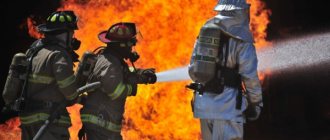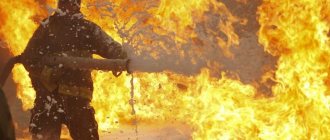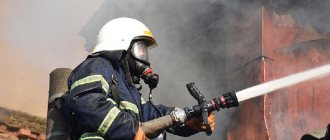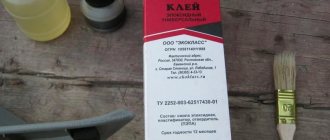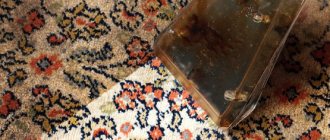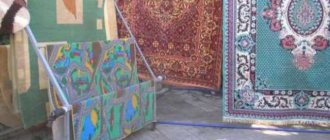We all know that if there is a fire, you need to call 101, but it is very important to know what you can and cannot put out yourself, and how to do it. At first glance, such issues are not even discussed, because everyone knows how to act in such situations. But this is only at first glance. After all, not everyone knows why, for example, it is impossible to extinguish burning gasoline, magnesium or ordinary oil with water.
you cannot extinguish burning petroleum products with water - they all have a low density, and water has a higher density
Will the kerosene ignite or not?
If, for example, you accidentally spill kerosene and let it dry. Afterwards, will it be flammable or not?
It is not the liquid that burns, but a mixture of kerosene vapor and air.
If it dries out, how will it light up? More precisely, what will light up? ))
Try pouring cognac on the floor. Let it evaporate. And then, I think, you won’t become drunk anymore. (don’t spare half a thousand for the sake of the experiment).
No, it will tan if you heat it up or if you put a rag or piece of paper in it like a wick, just like diesel, and since it won’t ignite with gasoline, and even if it dries out, there will be nothing to burn
I'm crazy about lighting kerosene only on a rag and diesel fuel the same way
Everything is very relative... For combustion, three conditions are necessary: a combustible substance, an oxidizer, an ignition source (a body with increased energy). Combustible substances are divided into several types: flammable, combustible, slow-burning, non-flammable.
And there is also the so-called loading with a flammable substance (concentration).
Flammable substances have a very low VAPOR FLASH point.
Let's move on to your task. Dried kerosene, as such, will not be flammable, since the flammable substance itself will be absent. If kerosene is absorbed into another substance (earth, wood, etc.), it will be flammable as long as the required vapor concentration is maintained. Or the ignition source will store the necessary energy.
How to extinguish flammable liquids
The ignition of flammable liquids is classified as class B fires. Such liquids include those that can ignite at temperatures up to 60 degrees.
Most often these are gasoline, kerosene, fuels and lubricants, and various types of acids. As a rule, it is not the liquids themselves that burn, but their vapors. The stronger the fire, the more fumes, which are toxic to humans. That is why gasoline and kerosene are stored in closed containers, and when used, care is taken to ensure that as little as possible of the substance gets into the air.
Tank fire control plan
It is advisable to begin extinguishing flammable liquids and gases in tanks with an assessment of the current situation, as well as with the calculation of the required means and forces. In the event of such an emergency, a voluntary fire brigade should be organized, the head of which will be the person responsible for managing the process of extinguishing the flame and distributing tasks among the fire extinguishing participants.
The responsible person must determine the volume of the territory in which extinguishing work will be carried out, and organize the removal of unauthorized persons from the danger zone.
Upon arrival at the fire site, the leader conducts reconnaissance and indicates to other firefighting participants the areas where maximum forces should be deployed.
Throughout the entire work, the manager’s tasks include providing all available forces and means of cooling flammable liquids and gases in tanks, as well as choosing the optimal method of fighting fire.
When the main forces are thrown into working with a burning container, it is important to protect neighboring tanks in case the damaged one collapses or the resulting gas-air mixture explodes. It is for this purpose that all fire engines are installed at a safe distance, and hose lines are laid to the work site.
Extinguishing tank farms of flammable liquids and gases directly depends on the duration of the fire, the nature of the resulting destruction of the tanks, the volume of stored liquids in the damaged and neighboring tanks, the likelihood of an explosion and subsequent emergency spill of the contents.
Causes of ignition of gasoline and other flammable liquids
The flammable substance can be:
Attention! The most dangerous, from a fire safety point of view, are gases.
Flammable liquids can ignite due to the following common reasons:
- electrical sparks entering tanks with flammable liquids;
- spontaneous combustion (as an option - peat);
- use of incendiary mixtures (pyrogels, white phosphorus, etc.);
- smoking in areas where petroleum products, gasoline and other flammable liquids are stored;
- warming up car engines using a kerosene lamp or open fire: very often drivers simply forget to put out the kerosene lamp and leave it in the garage;
- failure to comply with the rules for storing and transporting flammable substances;
- washing oily, oil- or gasoline-stained clothing indoors;
- violation of fire safety rules for premises where flammable liquids are stored;
- human factor (unwiped puddle of gasoline on the floor, a canister of kerosene left open, etc.).
Open fire temperature: temperature of the fire in the lighter, influencing factors and classification
A flame is a phenomenon that is caused by the glow of a gaseous hot medium. In some cases, it contains dispersed solids and (or) plasma, in which transformations of reagents of a physical and chemical nature occur. It is they that lead to self-heating, heat release and glow.
The gaseous environment of the flame contains charged particles - radicals and ions . This explains the existence of electrical conductivity of the flame and its interaction with electromagnetic fields.
Devices that can suppress a fire, change its shape, or tear it away from flammable materials using electromagnetic radiation are built on this principle.
The glow of fire is divided into two types:
- non-luminous;
- glowing.
Almost every glow is visible to the human eye, but not every one is capable of emitting the required amount of luminous flux.
The glow of the flame is determined by the following factors.
- Temperature.
- The density and pressure of the gases that participate in the reaction.
- Presence of solid matter.
The most common cause of glowing is the presence of a solid substance in the flame .
Many gases burn with a faintly luminous or non-luminous flame.
Of these, the most common are hydrogen sulfide (blue flame, like combustion), ammonia (pale yellow), methane, carbon monoxide (pale blue flame), and hydrogen.
The vapors of some volatile liquids burn with a barely luminous flame (alcohol and carbon disulfide), and the flame of acetone and ether becomes slightly smoky due to the slight release of carbon.
Flame temperature
For different flammable vapors and gases, the flame temperature is not the same. Also, the temperature of different parts of the flame is not the same, and the area of complete combustion has higher temperatures.
When burned, a certain amount of combustible substance releases a certain amount of heat. If the structure of the substance is known, then the volume and composition of the resulting combustion products can be calculated. And if you know the specific heat of these substances, then you can calculate the maximum temperature that the flame will reach.
It is worth remembering that if a substance burns in air, then for every volume of oxygen that reacts there are four volumes of inert nitrogen. And since nitrogen is present in the flame, it is heated by the heat that is released during the reaction. Based on this, we can conclude that the flame temperature will consist of the temperature of combustion products and nitrogen.
It is impossible to determine the temperature precisely, but it can be approximated since the specific heat changes with temperature.
Here are some indicators for the temperature of an open fire in different materials.
- Magnesium combustion is 2200 degrees.
- The combustion of alcohol does not exceed a temperature of 900 degrees.
- Gasoline combustion is 1300-1400 degrees.
- Kerosene - 800, and in an environment of pure oxygen - 2000 degrees.
- Propane-butane combustion can reach temperatures from 800 to 1970 degrees.
- When wood burns, the temperature ranges from 800 to 1000 degrees, and it ignites at 300 degrees.
- The burning temperature of a match is 750−850 degrees.
- In a burning cigarette - from 700 to 800 degrees.
- Most solid materials ignite at a temperature of 300 degrees.
The flame, which every person can observe when a candle, match or lighter burns, is a stream of hot gases that are pulled vertically upward, thanks to the force of Archimedes.
The candle wick first heats up and the paraffin begins to evaporate. The lowest part is characterized by a slight blue glow - there is little oxygen and a lot of fuel.
It is because of this that the fuel does not burn completely and carbon monoxide is formed, which, when oxidized at the very edge of the flame cone, gives it a blue color.
Due to diffusion, a little more oxygen enters the center. Subsequent oxidation of the fuel occurs there and the temperature increases. But this is not enough for complete combustion of fuel. At the bottom and in the center there are coal particles and unburned droplets. They glow due to intense heat.
But evaporated fuel, as well as combustion products, water and carbon dioxide, practically do not glow. At the very top there is the highest concentration of oxygen. There, the unburnt particles that glowed in the center are burning out.
It is for this reason that this zone practically does not glow, although the temperature there is the highest.
Flame classification
The glow of fire is classified as follows.
- According to visual perception: colored, transparent, smoky.
- Height: short and long.
- By speed of spread: fast and slow.
- By temperature indicator: high temperature, low temperature, cold.
- According to the nature of movement of the reaction medium: pulsating, turbulent, laminar.
- According to the state of the flammable medium: pre-mixed and diffusion.
- By radiation: colorless, colored, luminous.
- According to the state of aggregation of flammable substances: flame of aerodispersed and solid reagents, liquid and gaseous.
In a diffuse laminar flame, three shells (zones) are distinguished. Inside the cone of flame there is:
- dark zone, where there is no combustion due to the small amount of oxidizer - 300-350 degrees;
- luminous zone, where thermal decomposition of fuel occurs and it partially burns - 500-800 degrees;
- the zone is slightly luminous, where the products of fuel decomposition finally burn and a maximum temperature of 900-1500 degrees is reached.
The temperature parameter of the flame depends on the intensity of the oxidizer supply and the nature of the combustible substance. The flame spreads through the pre-mixed medium. Propagation occurs along the normal from each point of the front to the flame surface.
In real-life gas-air mixtures, propagation is always complicated by disturbing external influences, which are caused by friction, convective flows, gravity and other factors.
It is because of this that the real speed of propagation always differs from the normal one. Depending on the nature of the propagation speed, the following ranges are distinguished:
- During detonation combustion - more than 1000 meters per second.
- With explosive - 300−1000.
- With deflagration - up to 100.
It is located in the very top part of the fire, which has the highest temperature. In this zone, flammable substances are almost completely converted into combustion products. There is a lack of fuel and an excess of oxygen . It is for this reason that substances that are placed in this zone are intensively oxidized.
Restorative flame
This part is closest to the center or located just below it. There is little oxygen for combustion and a lot of fuel. If a substance containing oxygen is introduced into this area, it will be taken away from the substance.
Fire temperature in a lighter
A lighter is a portable device that is designed to produce fire. It can be gasoline or gas, depending on the fuel used. There are also lighters that do not contain their own fuel. They are designed to ignite a gas stove. A high-quality turbo lighter is a relatively complex device. The fire temperature in it can reach 1300 degrees.
Chemical composition and color of flame
Pocket lighters are small in size, which allows them to be carried without any problems. It is quite rare to find a table lighter. After all, due to their large size, they are not intended to be carried. Their designs are varied . There are fireplace lighters. They have a small thickness and width, but are quite long.
Today, promotional lighters are becoming popular. If there is no electricity in the house, then it is impossible for it to light a gas stove. The gas is ignited by the resulting electric arc. The advantages of these lighters are the following qualities.
- Durability and simplicity of design.
- Fast and reliable gas ignition.
The first lighter with modern flint was created in Austria in 1903 after the invention of ferrocerium alloy by Baron Karl Auer von Welsbach.
The development of lighters accelerated during the First World War. The soldiers began to use matches in order to see the road in the dark, but their location was revealed by the intense flash when ignited. The need for fire without significant flash fueled the development of lighters.
At that time, the leaders in the production of flint lighters were Germany and Austria. Such a portable device, which is designed to produce fire, found in the pocket of many smokers, can be fraught with many dangers if handled incorrectly.
The lighter should not spray sparks around itself during operation. The fire should be stable and even. The fire temperature in pocket lighters reaches approximately 800-1000 degrees. The red or orange glow is caused by carbon particles that have become hot.
For household burners and turbo lighters, butane gas is mainly used, which burns easily and is odorless and colorless. Butane is obtained by processing oil and its fractions at high temperatures.
Butane is a flammable hydrocarbon, but it is absolutely safe in modern lighter designs.
Such lighters are very useful in everyday life. They can set fire to any flammable material. The set of turbo lighters includes a table stand.
The color of the flame depends on the combustible material and combustion temperature. The flame of a fire or fireplace generally has a motley appearance . The burning temperature of wood is lower than the burning temperature of a candle wick.
It is because of this that the color of the fire is not yellow, but orange.
Copper, sodium and calcium glow in different colors at high temperatures.
The electric lighter was invented in 1770. In it, a hydrogen jet was ignited by a spark from an electrophore machine. Over time, gasoline lighters gave way to gas lighters, which are more convenient. They must contain a battery - a source of energy.
Not very long ago, touch lighters appeared, in which, without mechanical action, gas is ignited by acting on a touch sensor. Pocket-type touch lighters. Basically, they contain advertising-type information, which is printed using pad or silk-screen printing.
What else can’t be extinguished with water?
There are substances that are simply dangerous to extinguish with water. What these substances are and why water should not be used is described below:
- lead azide - if the humidity increases to 30%, it explodes;
- bitumen - when it is extinguished with water, it begins to eject and the combustion intensifies;
- silicon iron – spontaneously ignites in air;
- calcium phosphorous - when combined with water, self-igniting hydrogen phosphorous is released;
- alkali metal carbides - explode if a stream of water is directed at them;
- acids (sulfuric, nitric, hydrochloric) and substances that contain these acids - an exothermic reaction occurs;
- potassium peroxide - combustion intensifies and an explosion is possible;
- sodium sulfate – when extinguishing with water, it becomes very hot and a fire may occur;
- saltpeter - upon contact with water, an explosion occurs (strong release), combustion intensifies;
- chlorosulfinic acid - reacts explosively to water.
This is not a complete list of substances that are contraindicated to extinguish with water.
Also, you cannot extinguish any electrical devices with water.
Effect of water in a fire
When water hits a burning object, the first thing it does is cool the top layer, which is heated and already exposed to fire. But the water also evaporates. At high temperatures, it instantly turns into steam, displacing air from the fire area and diluting the reacting substances. As a result, the fire goes out.
In addition, tiny drops of water penetrate the pores of burning materials, protecting the material itself from burning. When it hits an object engulfed in fire, it seems to envelop the object itself, the access of oxygen stops, and the fire subsides. But this doesn't always happen.
Will water with kerosene burn?
Kerosene for lighting is the most common, suitable (almost pleasant) for fireballs, burns satisfactorily. It is convenient to buy at construction markets and hardware stores in 5-liter canisters. These cans, however, leak, so it’s better to immediately pour them into 5 liter drinking water bottles. Recently it has become a standard for mass firefights with the participation of more than 5 people.
A mixture of liquid paraffins. As a rule, 0.5 liter bottles under different brands, but the key phrase is “Composition: a mixture of liquid paraffins.” Found in supermarkets, among fireplace coals, it is sold as fire starter fluid. Also available in fishing and hunting stores. Pros: does not smell, does not seem to smoke, therefore it is more aesthetically pleasing for picky spectators, and is suitable for dancing indoors. Cons: high cost compared to kerosene. . You can get burned by a fireball.
Aviation kerosene Burns even hotter, flares up with an explosion - very high volatility. Pros - at higher speeds the flame changes color. Disadvantages - burns on the skin upon contact! With a fireball, you can really get burned. On the other hand, it has a more pleasant smell than lighting, reminiscent of rubber glue, evaporates cleanly, leaving no greasy stains or residual odor.
Diesel fuel burns worse; it is indecent to light it in the wind and cold. Pros - it actually burns longer (one and a half times), but - you can’t accelerate too much - it goes out. In the cold it starts to burn normally the second time when the wicks are heated. Almost unsuitable for fireballs.
A mixture of kerosene and machine oil is apparently the best option: it burns for a long time, ignites easily, and does not go out. The downside is that you need to get oil (well, not sunflower oil, actually) and have a separate container with clean kerosene for fireball. Technical alcohol (isopropyl) is an unfamiliar beast to me, I only know what happens, it doesn’t smoke, it doesn’t smell, that’s why it’s good. Using alcohol and dissolving metal salts in it, you can achieve a colored flame. I’m looking for people who have experience handling and purchasing it - it’s not available in regular construction stores.
In addition, you can use any other flammable liquids: there are known cases of using gasoline, alcohol tinctures (the famous “hawthorn tincture”), and solvents. But these are all not very good options for various reasons.
Source
The process of fire development in a tank
Extinguishing fires in tank farms storing flammable liquids and gases depends on the complexity of the fire development process. Combustion begins due to the explosion of the gas-air mixture in the presence of an ignition source. The formation of a gassed environment occurs due to the properties of gas liquids and flammable liquids, as well as operating modes and climatic conditions around the tank. Exploding, the gas-air mixture rushes upward at high speed, often tearing off the roof of the container, after which ignition begins over the entire surface of the stored flammable liquid.
Rules for storing gasoline
Flammable and combustible substances are stored taking into account all safety rules for premises with flammable liquids:
- pouring flammable substances from one container to another must be done under strict control over the filling of the container;
- all storage containers must be technically tested and certified;
- containers with gasoline are prohibited from being placed near open flame sources and heating devices;
- Do not heat containers with a kerosene lamp or gas burner.
The speed and correctness of initial actions is the key to effective fire suppression in the future. Knowing how to use fire extinguishing agents as intended can save your life.
Source
How to stew correctly
The first rule is to calm down. Panic is the main enemy in a fire. The second is to act immediately, not allowing the fire to spread. Kerosene is liquid even without water and will spread; this must be stopped as soon as possible.
The ideal remedy
Foam from a fire extinguisher or fire-fighting equipment completely blocks the access of oxygen, while at the same time it has a huge heat capacity - it does not coke and does not emit acrid smoke. However, in practice it is rarely possible to resort to foam without calling 103, especially at home.
At home
To extinguish a fire, it must be deprived of oxygen. If a small puddle breaks out on the table, cover it with a small heat-resistant dish (for example, a frying pan, if it is pressed tightly to the countertop) or a wet, thick rag.
We recommend: How to dissolve hair in a bathroom drain: 5 methods
A wet rag? Yes. Drops of water between the fibers, firstly, will prevent the rag from catching fire, and secondly, they will act as plugs, blocking the access of air.
If the kerosene spreads on a larger scale, immediately call the Fire Department. Throw 1-3 blankets and blankets over the fire - dense, heavy, without padding, and lint is not desirable on the side facing the fire. The canvas should immediately cover the flame and crush it.
Important: Miss Clean magazine notes that many modern blankets are not thick enough and are made of synthetics that burn easily - they are not suitable for fighting fire. Without panic, wet two sheets in the bathtub and throw them over the fire. This will take no more than a minute.
In field
The best thing you can do in a garden plot, vegetable garden or field is to throw earth or sand at the fire. Of course, if there is a sufficiently dense and heavy material, for example, a tarpaulin, you can cover the flame with it, but it is better to throw sand on top - otherwise the wind will lift the edges and fan the flame.
In public places
There must be a fire extinguisher on a bus, shopping center or office. But unless you are standing right next to the box with this equipment, do not try to put out the fire yourself. Report to 112, tell the nearest consultant about the problem and that’s it. Leave, taking as many people as possible along the way.
Why? Because your safety is obviously more important. If every visitor leaves the fire site on time and without panic, there will be no casualties. Experts can deal with extinguishing more efficiently and quickly.
Kerosene is an excellent solvent and inexpensive fuel. It is not so uncommon to find it in the household. If it catches fire, there is no need to panic. Cut off the air supply and the flame will quickly go away. Wash the surface afterwards to remove any hazardous residue.
We recommend: 10 secrets of cling film and ways to use it in everyday life
Short answer
It is not recommended to extinguish with water:
- burning gasoline
- kerosene
- other petroleum products
- magnesium (can be found in car parts, appliances and many other places)
- Vegetable oil
Below is a table of substances that cannot be extinguished with water.
| Substance | Nature of interaction with water |
| Organoaluminum compounds | React explosively |
| Dilute solutions of organoaluminum compounds | Decomposes to form gaseous hydrocarbons, which form explosive mixtures with air |
| Metal arsenides | Hydrogen arsenide (arsine) is formed, which ignites spontaneously in air |
| Highly sensitive explosives (lead azide, mercury fulminate, nitroglycerin) | Explode when hit by a jet of water |
| Alkali and alkaline earth metal hydrides, alkali metal aluminum hydrides | Hydrogen is released, igniting from the heat of the reaction; explosions are possible |
| Carbides of aluminum, barium, calcium, magnesium, manganese | Decomposes releasing flammable gases |
| Alkali metal carbides | Explode on contact with water |
| Magnesium and its alloys | Burning metal decomposes water into hydrogen and oxygen |
| Organomagnesium compounds (R2Mg) | React explosively |
| Potassium superoxide (KO2) | Reacts violently with water to form hydrogen peroxide; Explosive release and increased combustion possible |
| Peroxides of alkali and alkaline earth metals | React violently to form hydrogen peroxide and release heat |
| Metal silicides (lithium, magnesium, iron, etc.) | Hydrogen silicide (silane) is released, self-igniting in air |
| Metal stibides | Combustible hydrogen stibide (stibine) is released |
| Metal phosphides | Hydrogen phosphide (phosphine), which is self-igniting above 150 °C, and diphosphine, which is self-igniting at room temperature, are released. |
| Organozinc compounds (R2Zn) | Interact violently, sometimes with explosions |
| Alkali metals | The heat of the reaction ignites the released hydrogen and the metals themselves. |
| Alkali metal organic derivatives RM | React very violently, reaction products ignite |
Water is not allowed, then what?
In order to put out a fire, you need to try to understand what is burning and what material the burning object is made of.
In addition to water, the following are also suitable:
- various powders - they are universal and suitable for extinguishing any fire;
- foam - it will be able to cope with fire that threatens liquid flammable substances. A carbon monoxide fire extinguisher is especially good for this. In addition, foam is most gentle on household items on which fire occurs;
- sand - used in fires that occur in the event of electrical failures. Every building should have a fire cabinet for sand and special fire extinguishing tools. To extinguish such a fire, you must first turn off the power to the entire room.
Methods for extinguishing gasoline
So how can you extinguish burning gasoline, kerosene, oils and other flammable and combustible liquids?
At the first stage of fire extinguishing, the following portable, mobile and manual means are used:
Fire extinguishers
The markings on the devices will tell you whether they can be used to put out gasoline.
Ignition of gas fluid is a class B fire.
The means used to extinguish fires of this class are:
- Powder fire extinguishers. Used in transport (cars, planes, buses, etc.). The principle of operation is to block the flow of O2.
- Carbon dioxide fire extinguishers. They are used in everyday life as they do not harm electrical equipment. They are able to limit the supply of oxygen and reduce the temperature at the source of the fire.
- Foam fire extinguishers. They work by displacing foam from the foam concentrate onto the burning substance. It cools the fire and removes oxygen.
Attention! Powder fire extinguishers are not used in domestic conditions, since after their use some of the active substance remains. They spoil the decoration of the room, and cleaning them takes a lot of time and effort.
Sand
You can extinguish gasoline and other liquids using ordinary sand or dry earth.
- stop the increase in burning space;
- extinguish the flame.
When extinguishing a fire with sand, the substance is poured along the perimeter of the fire, limiting the spread of the dangerous liquid. When the fire is contained, it can be extinguished by carefully pouring sand until the fire is extinguished.
Textile
An unusual but effective means of extinguishing LV is tissue. A fireproof fabric is used to cover the flame, thereby limiting the supply of oxygen to the source of the fire.
This method is often used in enterprises when igniting fuel in storage tanks. The cloth is simply covered with a burning device, thereby blocking further development of the fire.
Attention! In order to enhance the effect, the fabric is slightly moistened. Water helps reduce the temperature at the source of the fire.
